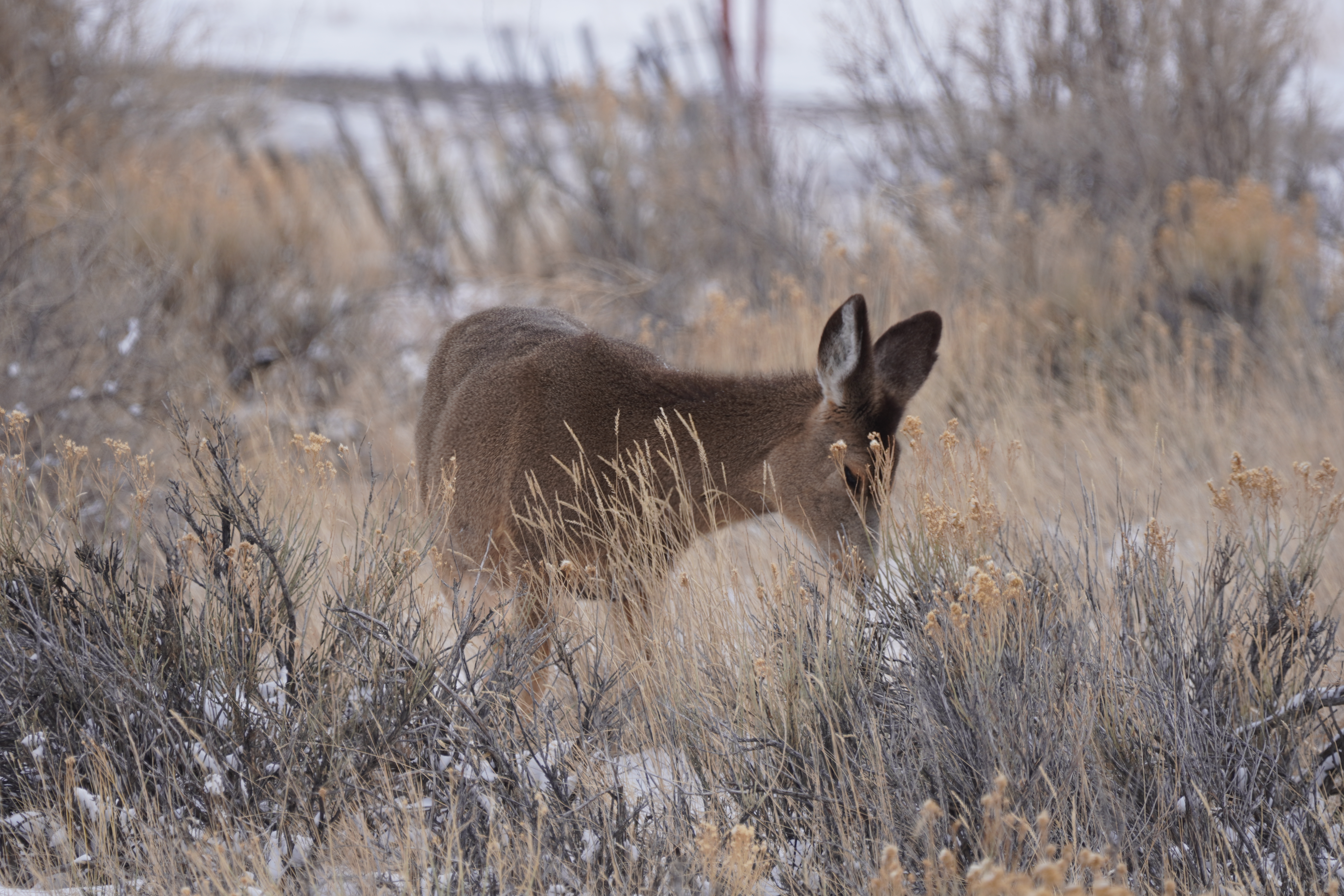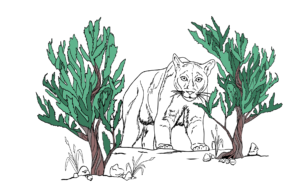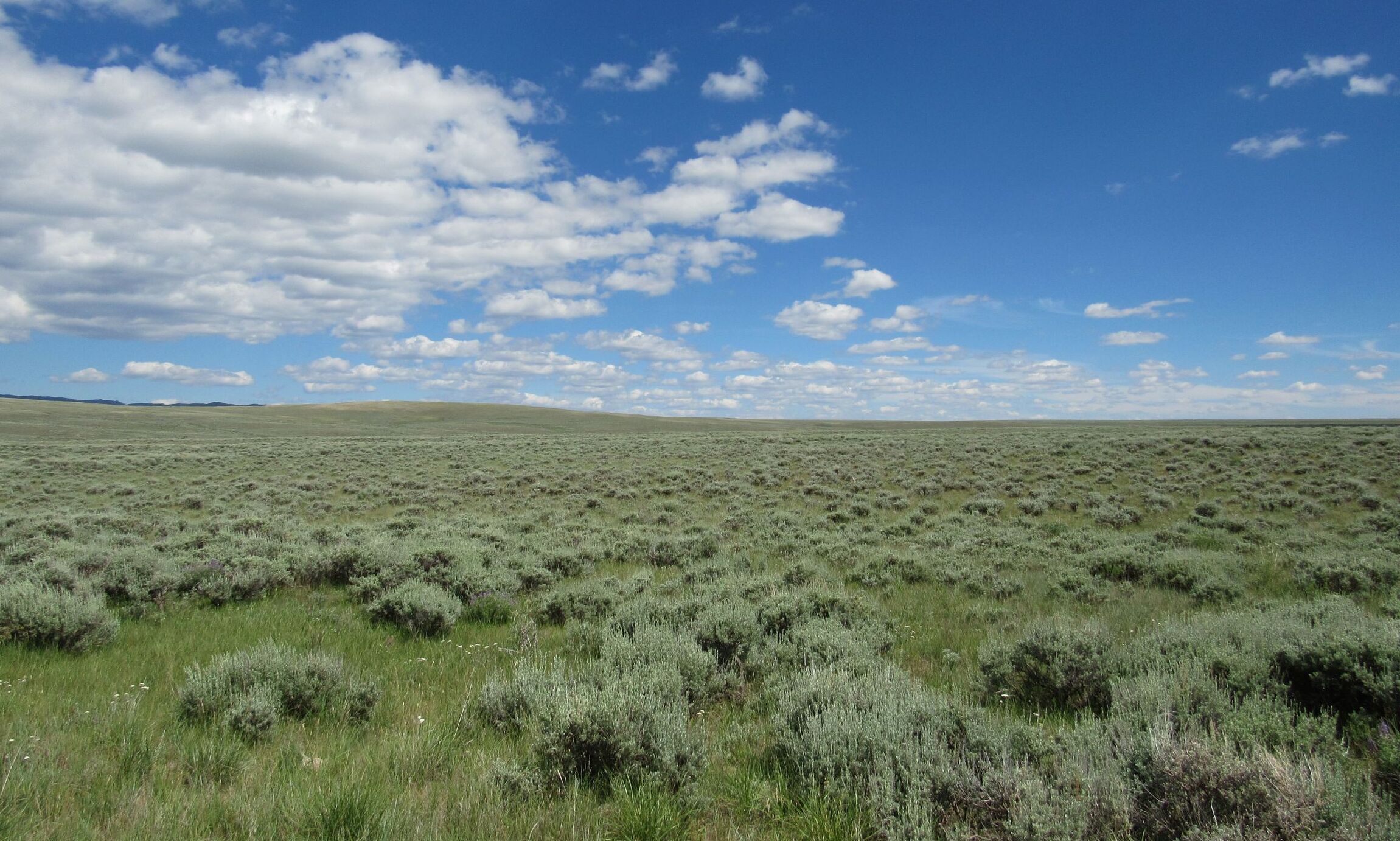If your favorite deer, moose, or sheep herd is declining, you want to get to the bottom of it and figure out what is causing the population to decline, right? Often predators are assumed to be causing declines to ungulate populations, but scientists over the past few decades and across the globe have attempted to really get to the meat of this question.

However, whether it’s elk or mule deer or wildebeest, we realize time and time again that the answer to what is causing a given population of ungulates to decline is incredibly complicated.
Part of the reason this question is so complex is because population regulation depends on context. For example, if you are a moose in a population that is bursting at the seams, so much so that each moose has less food than they’d like, the moose buddies you lose to a wolf pack don’t affect the overall population too much. However, if another moose population in the next valley over is a bit sparser than we’d like, losing even one moose to a predator matters more. This is a process scientists call density dependence: the effects on a population can be stronger or weaker depending on how big that population is.
Another piece of the puzzle is the landscape itself, through a concept called carrying capacity. Carrying capacity is the number of animals that a habitat can support. If there isn’t enough food for a large number of ungulates, there cannot be a large number of ungulates. On the other hand, if there is lots of available food, the habitat can handle having more animals in it.
Think of it this way: if you’re invited to an annual party, and you walk in to find that everyone has brought something to eat, you’ll stay at the party for a long time, sampling each snack, trading recipes, and making sure you get the whole experience. However, if you go to that same party and there’s only one bag of chips set out, not everyone can eat as much as they want: you might want to go home and cook for yourself. Some years, the party has better food, and some years everyone grabs a cheese and veggies plate at the supermarket on the way, and some forget about bringing food altogether. The food situation changes from year to year, whether you’re attending an annual party or if you’re an ungulate in the mountains. It also depends on how many people have come to this party: if only one or two people are there, that bag of chips might be enough, but with a big group it won’t go nearly as far. The number of people that can be fed at the party is then subject to change through time with the current food situation and the need for sharing.
Much like food at a party, the amount of food and the quality of food that an ungulate can access directly influences how large a population can get. Take the case of wildebeest in the Serengeti. When vegetation is plentiful, populations of wildebeest grow until they stabilize at a sort of “topped-out” number: that’s carrying capacity. Historical population and vegetation data show that when wildebeest populations are large it is because there is plenty to eat, and when there isn’t enough food to support the growing population, the wildebeest population drops. This is bottom-up forcing, which boils down to the concept that what animals are eating–what is below it on the food chain–then becomes the most important factor in ungulate population size.
So, bottom-up forcing seems like a clear answer to our population decline question, right? If only it were so easy: there are also some instances where predators, rather than food, may be able to influence ungulate populations. This idea is called top-down forcing.

We’ve seen this in a study of mule deer and mountain lions in California, where predators (mountain lions, in this instance) end up reducing ungulate numbers, especially when deer populations are well below carrying capacity. At this point, deer wouldn’t die from lack of food, so predators may eat enough deer that they reduce the population, or keep it from growing.
It is important to note that these concepts are not mutually exclusive: they can both be happening, and one can have more influence during one time and less in another. Let’s revisit our moose population from before: one valley might have a really hard winter with lots of die-off, and then the following summer there are fewer animals and more food to go around. The next valley might have a moose population that is smaller but increasing towards carrying capacity, and so predators have a much larger effect over that population. Over the next few years, that might even switch between those populations. An ungulate’s habitat is not stationary because the landscapes change over time and from season to season: so, then, do the factors that influence ungulate populations.
The fact is that population size and ungulates are influenced by more than just plants and predators. Not only are these ideas not mutually exclusive, but they can intersect with each other. We know that plants are extremely important to populations of ungulates. We know that predators can be important, and above all we know that the problem is more complicated than we originally thought.
Compendium by Taylor Kennah.
Want to read more? Check out these papers:
- Bowyer, R. T., D. K. Person, and B. Pierce. 2005. Detecting top-down versus bottom-up regulation of ungulates by large carnivores: implications for conservation of biodiversity. Book chapter in Large Carnivores and the Conservation of Biodiversity.
- Skogland, T. 1991. What are the effects of predators on large ungulate populations? Oikos 61:401.
- Pierce, B. M., V. C. Bleich, K. L. Monteith, R. T. Bowyer, R. T. 2012. Top-down versus bottom-up forcing: evidence from mountain lions and mule deer. Journal of Mammalogy 93:977–988.

